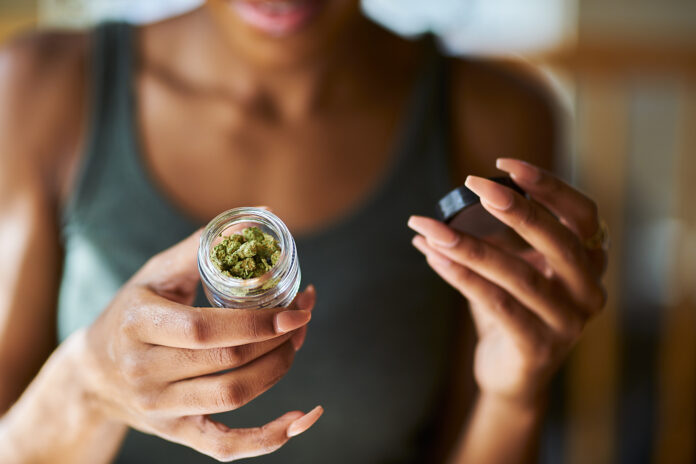I am fortunate to work with some of the world’s most prominent scientists studying phytocannabinoids and their effects, so I see things through a different lens than many cannabis consumers.
Case in point: I recently visited a retail store as a customer, and here’s how the conversation went after I expressed interest in purchasing “the most delicious” flower:
Budtender: “Do you like high THC or low THC?”
Me: “Is there a specific number that separates low from high?”
Budtender: “Yes, there is. Above 40-percent THC is considered high THC, and lower than that is low THC.”
Wow. Just rewriting those spoken words is jarring. To add insult to injury, this was said within the four walls of an establishment that touts its education focus.
Although the words were said with confidence and alacrity, they demonstrated with absolute clarity some of the biggest deficiencies plaguing the industry: extreme lack of sophistication, deficient knowledge, and downright irresponsibility on the frontlines of retailer-customer interaction.
We continued:
Me (calmly but confidently): “You are citing a percentage, not an absolute value as would be the case if you were measuring THC content in milligrams, so don’t we need to take into account flower quantity?”
Budtender: “No, 40 percent refers to potency, and it will be stronger and set you down harder as compared to under 40 percent, which is less potent and less intense.”
I had mistakenly hoped the budtender would acknowledge a THC percentage alone is largely meaningless without referencing the quantity of flower to be consumed. I then tried a different approach. “Wouldn’t consuming an entire one-gram pre-roll testing at 20 percent result in more THC consumption than sharing a one-gram resin-infused pre-roll testing at 60 percent with four friends?” I asked.
The budtender didn’t respond verbally, but their facial expression screamed confusion. It was a deer-in-the-headlights moment. I empathized and wanted to end the interaction by giving the budtender something to think about and possibly even be inspired to research: “I don’t think it is possible for any non-infused flower to be 40-percent THC by weight.”
The budtender adamantly replied, “I am not referring to weight. I am referring to THC content.”
Speechless and unable to process that answer, I had visions of the robot in the 1960s TV show Lost in Space exclaiming “Warning! Warning!” and “That does not compute.”
The budtender then handed me a kief-infused pre-roll labeled 36-percent THC and said, “Here, this is 36 percent, which is low-THC and will be perfect for you.” They never asked me anything about flavor preferences, despite the fact I said I was looking for the most delicious flower on the shelf.
Salespeople who are interacting with new, canna-curious customers or customers returning to cannabis after years of non-use will be ineffective ambassadors for sustained marketplace growth unless and until they can serve as cannabis sommeliers.
Here are five ways I wish budtenders would interact with customers.
1. Explain the biphasic nature of cannabinoids.
THC often is pitched as something to help facilitate relaxation, but it promotes anxiety at higher doses. CBD often is pitched as a sleep aid, but it has been shown to be stimulating in smaller doses. How can budtenders not educate consumers about biphasic dose-response curves? Perhaps many have never been trained on the topic, or perhaps knowledge that “less is sometimes more” will not be good for that day’s sales numbers.
Customers can always use more of a lower-THC product if they want more THC, but starting with a high-THC product doesn’t allow consumers to back off as easily. The power of the dose-response curve is taken away from consumers if the cannabinoid content is too high to begin with.
2. Teach experienced and canna-curious consumers alike that THC percentages are not indicators of flower quality.
The winners of the “Academy Awards of cannabis,” also known as The Emerald Cup, are never the flowers with the highest THC numbers. In fact, THC often drowns out the pharmacological effects of other plant compounds. Let consumers know THC sometimes causes anxiety and paranoia and, potentially, hippocampal harms.
Nobody would use a sledgehammer to nail a picture frame hook to a wall because, despite its potential power, the lack of precision diminishes the tool’s usefulness for some jobs. A lightweight hammer that can be held and used in one hand will be more effective and efficient for this use than a sledgehammer. In the same way, high-THC products are not the answer when looking for resilience, comfort, happiness, relaxation, joviality, inspiration, or a plethora of other psychological states that have very little in common with being super-high. View every customer interaction as a teaching opportunity.
3. Build a product offering around a chemically diverse flower selection and encourage customer experimentation.
A truly diversified product offering should be made available to allow customers to experience different cannabinoids at different concentrations and ratios, as well as different terpene profiles for each concentration and ratio. Despite a wide variety of flower names, a majority of flowers in the regulated retail marketplace are substantially similar from a chemical perspective. Treating cannabis as a one-size-fits-all commodity inevitably will lead to flowers that simply don’t fit, which in turn will lead to missed opportunities for new customer acquisition and retention.
Brands should be encouraged to apply a chemical-focused “ingredients” label to their products, and I applaud those brands that are incorporating terpene and cannabinoid data via PhytoFacts® into their packaging and branding. How often do you check the nutrition label when shopping for foods? Think of PhytoFacts® as a nutrient label for cannabis: It will tell customers all about the “ingredients” in the product and the most commonly experienced effects. This information will facilitate desperately needed exploration and experimentation, which together will fuel cannabis enthusiasm.
4. Explain that CBD can enhance THC’s most pleasing effects while protecting against the most deleterious.
Earn customers’ trust, respect, and loyalty by sharing information that is not widely discussed in cannabis culture circles but is broadly understood in the scientific community. Cite published studies that show THC blood plasma concentrations are higher when consumed with CBD than when THC is consumed alone. Explain that low to moderate levels of CBD enhance the most pleasurable, intoxicating effects of THC. Describe how CBD is akin to a ski helmet—something that increases fun by decreasing worry. Refer to THC and CBD as two compounds that simply are better together than when used alone.
5. Ask questions.
What if you walked into a pharmacy and asked the person behind the counter to recommend a medicine, and that salesperson didn’t know what you wanted the medicine to do, what other medicines you were taking, or whether you had any sensitivities to certain medicines? The chances are somewhere between slim and none the recommendation would be a good one. Absurdly, you could end up with Neosporin to treat an upset stomach. Customer-facing salespeople need to understand what customers desire to achieve and learn about prior experience before recommending any product or method of use.
To effectively share and teach (points 1 through 4 above), budtenders first must learn.
Everything starts with education in the broadest sense—not just at the point of sale, but at every stage of the supply chain. Cultivators need to understand the chemical composition of the cultivars (“strains”) they’re growing. Manufacturers need to practice full disclosure about how they’re labeling and packaging their products. Retailers need to invest time and energy into giving staff a true education about the chemistry of the plant and the effects of its compounds.
I have been told my expectations are too high, but I believe such critics’ expectations are too low. Consumers who desire to incorporate cannabis into their lives are unable to have an optimal experience without optimal product guidance. A sommelier can’t possibly educate a wine newbie or recommend a good wine to a discerning customer without being able to speak with authority about varietals, terroir, tannins, body, mouthfeel, structure, and acid—and how well they all integrate in the glass.
Although the budtender mentioned above didn’t intend or desire to cause harm, improper education (or the absence of education) can do just that. We must raise the bar with respect to educating and messaging at the point of purchase if we want to convert the canna-curious into canna-loyalists and enable the industry to reach its full potential.

Gary Hiller is CEO at Biotech Institute, which employs cannabinoid genetics to support research and development of plant-based therapeutics and related technologies. The company’s intellectual property includes chemovars designed for improved control of pain, inflammation, convulsion, and anxiety, along with chemovars that reduce adverse effects such as panic, psychosis, and memory impairment.













